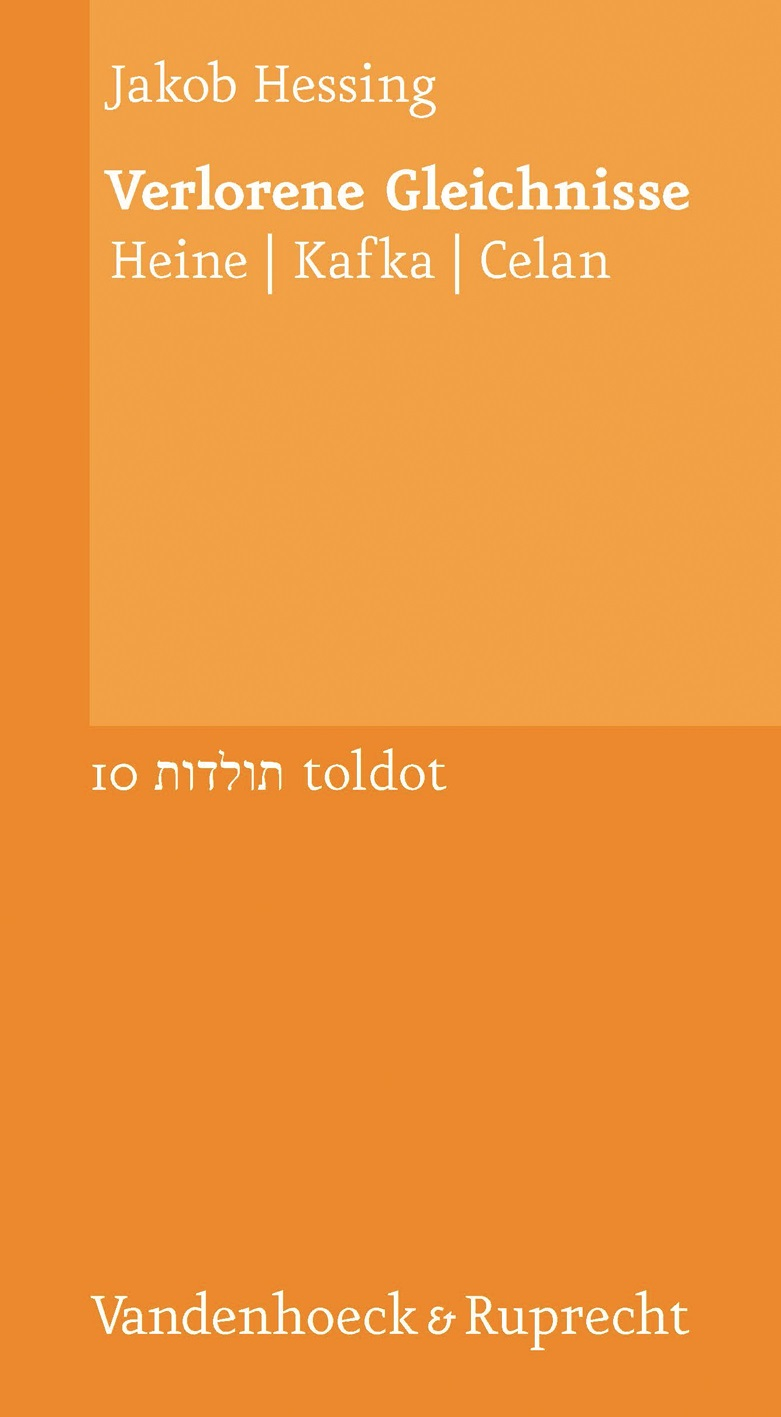Volume 10
Verlorene Gleichnisse
Heine Kafka Celan
With a foreword by Dan Diner
The essay explores transitions between sacred and secular texts in modernity, looking at three constellations that differ in space and time. Jakob Hessing interprets works by Heinrich Heine, Franz Kafka and Paul Celan against the backdrop of a loss in religious substance that went hand in hand since Moses Mendelssohn with the entry of the Jews into German culture. He concentrates in particular on the parable as a genre where we can most clearly discern that process of transformation.
That can be shown already in Lessing's Parable of the Three Rings: man supplants the position of God, and Heine was the first writer to recognize the price paid for that. Breaking the subject ironically, Heine inspected the options for salvation offered by modernity, while the end of his life brought a return to his own origins as a prodigal son. That path was blocked for Kafka. He too played in his narratives with elements of the biblical parable, but in an almost desperate manner. Like his contemporary Freud, Kafka significantly remolded those divine emblems, yet was no longer able to find in them any kernel of promise. Scarcely twenty years after Kafka's death, the traditions on which German culture was grounded lay shattered in ruin. The surviving Jews in this cultural space had lost their homeland, their language and the security of the sacred signs. When Celan began to publish his poems toward the end of the 1940s, he was already living in France, where he created a new language of imagery in which the lost world of parables resonated as echo.
148 pp., paperback
Göttingen/Oakville, Conn.: Vandenhoeck & Ruprecht, 2011
ISBN: 978-3-525-35086-7
Price: 23,00 € (D)
Order
ISBN (e-book): 978-3-647-35086-8
Price: 18,99 € (D)
Order


